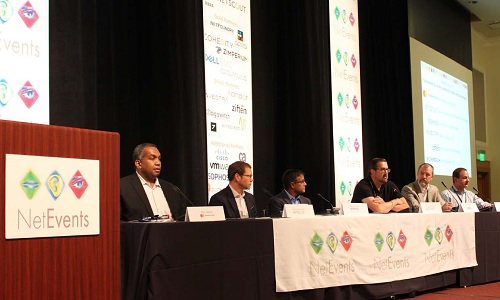
 In late September APSM spent a week visiting San Francisco, San Jose and Silicon Valley, courtesy of NetEvents and attending the ‘Innovators in Cloud, IoT, AI & Security’ program at the Dolce Hayes Mansion, San Jose. During the three days we were driven through Silicon Valley, briefed on a range of new and emerging technologies, companies and gained insights from a range of technology and industry focused panel sessions.
In late September APSM spent a week visiting San Francisco, San Jose and Silicon Valley, courtesy of NetEvents and attending the ‘Innovators in Cloud, IoT, AI & Security’ program at the Dolce Hayes Mansion, San Jose. During the three days we were driven through Silicon Valley, briefed on a range of new and emerging technologies, companies and gained insights from a range of technology and industry focused panel sessions.
Tracking on the first stop
The drive through of Silicon Valley started with a visit to Zebra Technologies, a company with US$3.6 billion in revenue, 6,500 employees and 4,600 patents issued and pending. Spending 10 per cent of sales on R&D has transformed this company from manufacturing barcode scanners to now broadly across hardware and information technology systems and services. Key technology offerings still remain in barcode printing but the diversification has expanded across a range of verticals for mobile computing, data capture and printers. In your everyday life you are probably near a piece of Zebra hardware.
Enterprise asset management is a key theme Zebra conveys to clients as their devices can be used for data capture and data analysis with a real-time approach to sense, analyse and act. The case study presented to the NetEvents group was the NFL and the insertion of tracking devices into the shoulder pads of every player in the league, including at training. These devices have a year-long battery life and operate in the 6 – 6.5Ghz range, tracking the player in real time and within centimetres of accuracy. Sitting inside the shoulder pad, the units are naturally wash and impact resistant. Each player is allocated up to 10 tag sets for each year and each device carries just 8 bytes of data. With three tags worn by each player, this is sufficient to provide their orientation, XY coordinates, speed, acceleration and these primary datasets then allow the contextualising of the data, with the other data sets being generating by the other players. Devices are now being inserted into the ball, so the full contexualised movement of a full NFL game, between players and ball, is captured in real time and analysed. All data is fed back to a hub and the algorithms in the hub do the real time calculations, such as tactical schematics and performance. Local positioning systems around the stadium is hyper-timed and designed to operate as a standalone system with inbuilt redundancy. The Kinduct athlete management system also uses the data as part of a player management and injury prevention system.
Now in its third year with the NFL, Zebra is looking to other markets including college football, rugby, hockey and ball instrumentation has received interest in Australia and European sporting codes…Click HERE to read full article.





